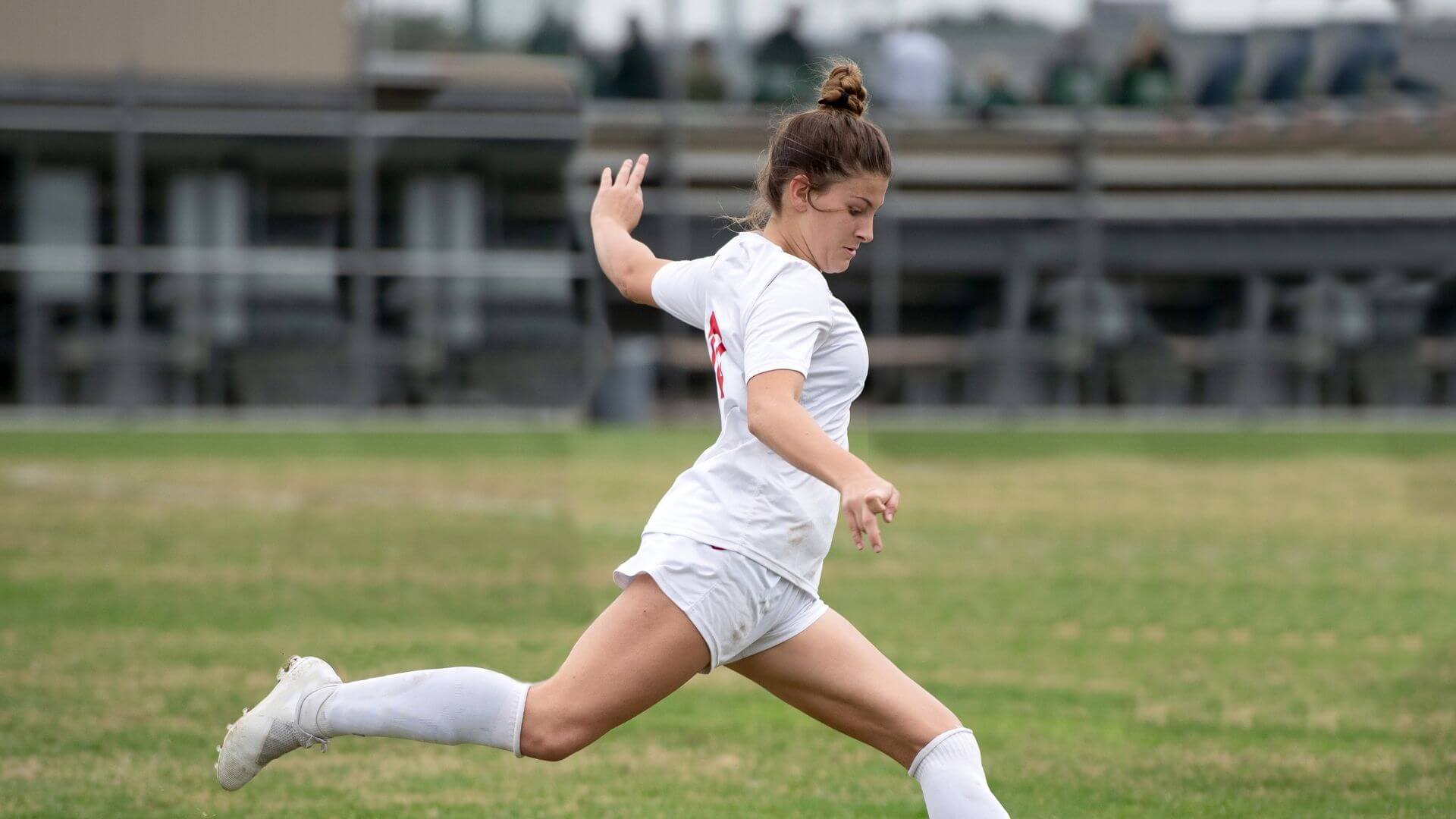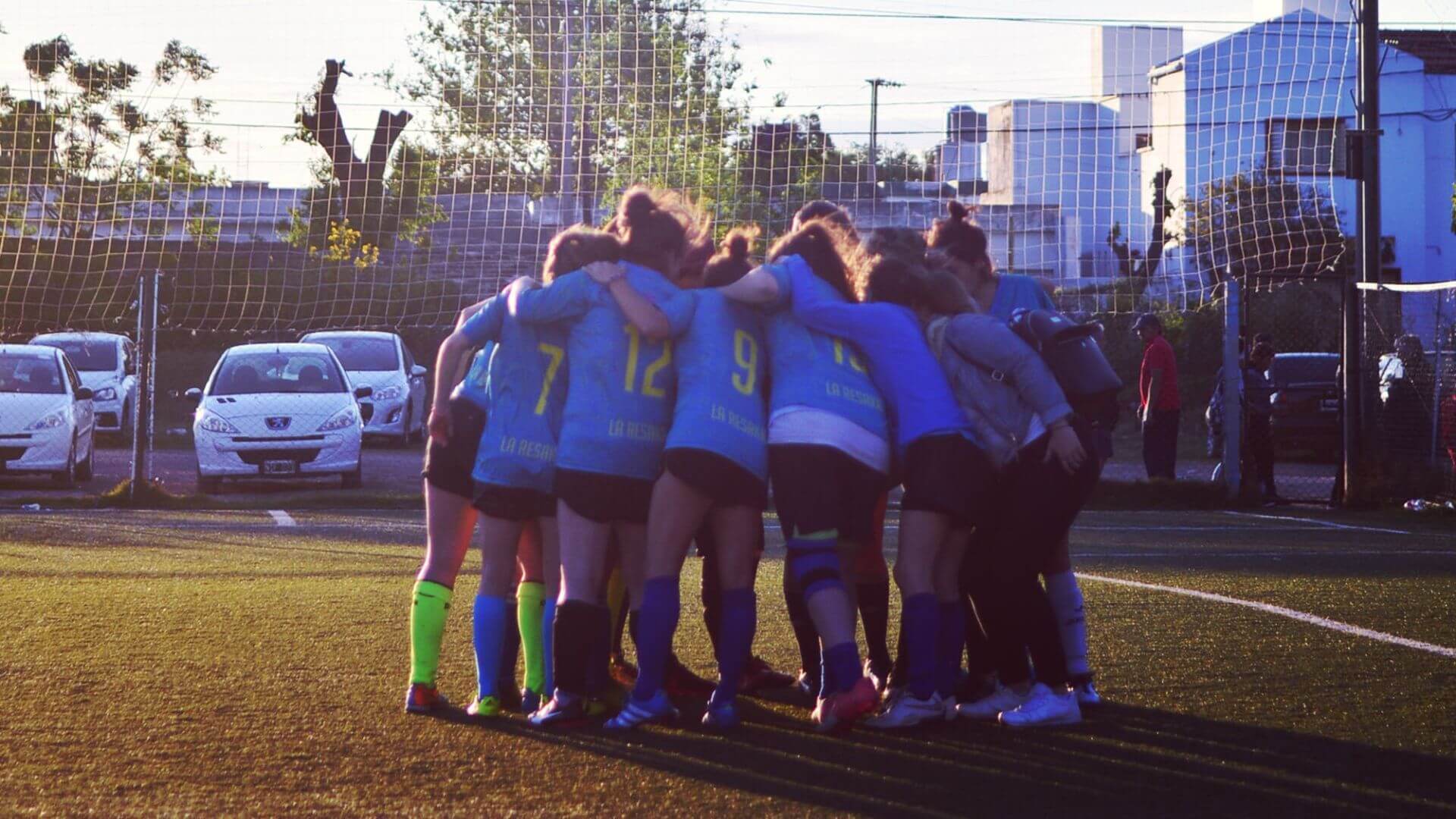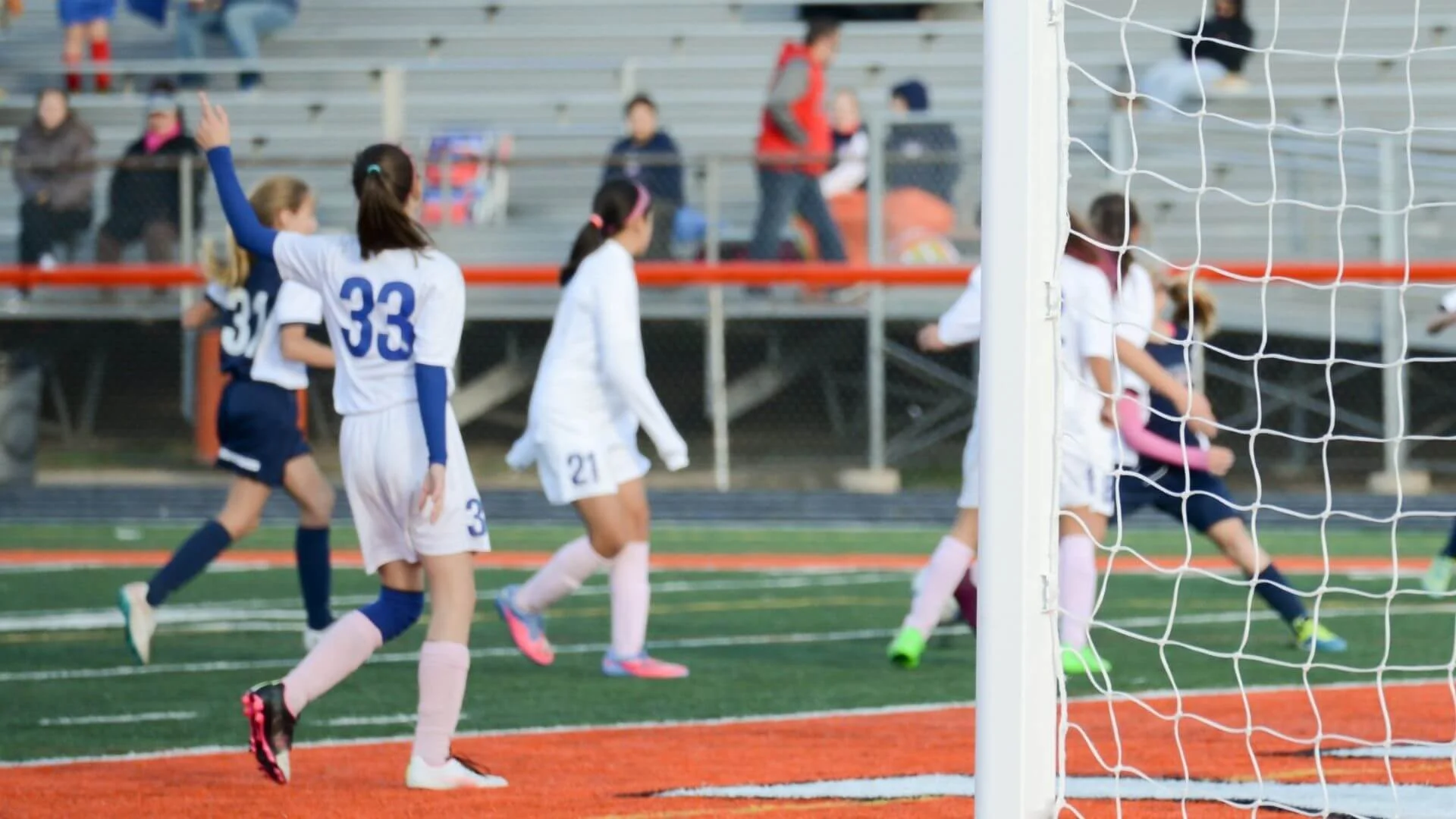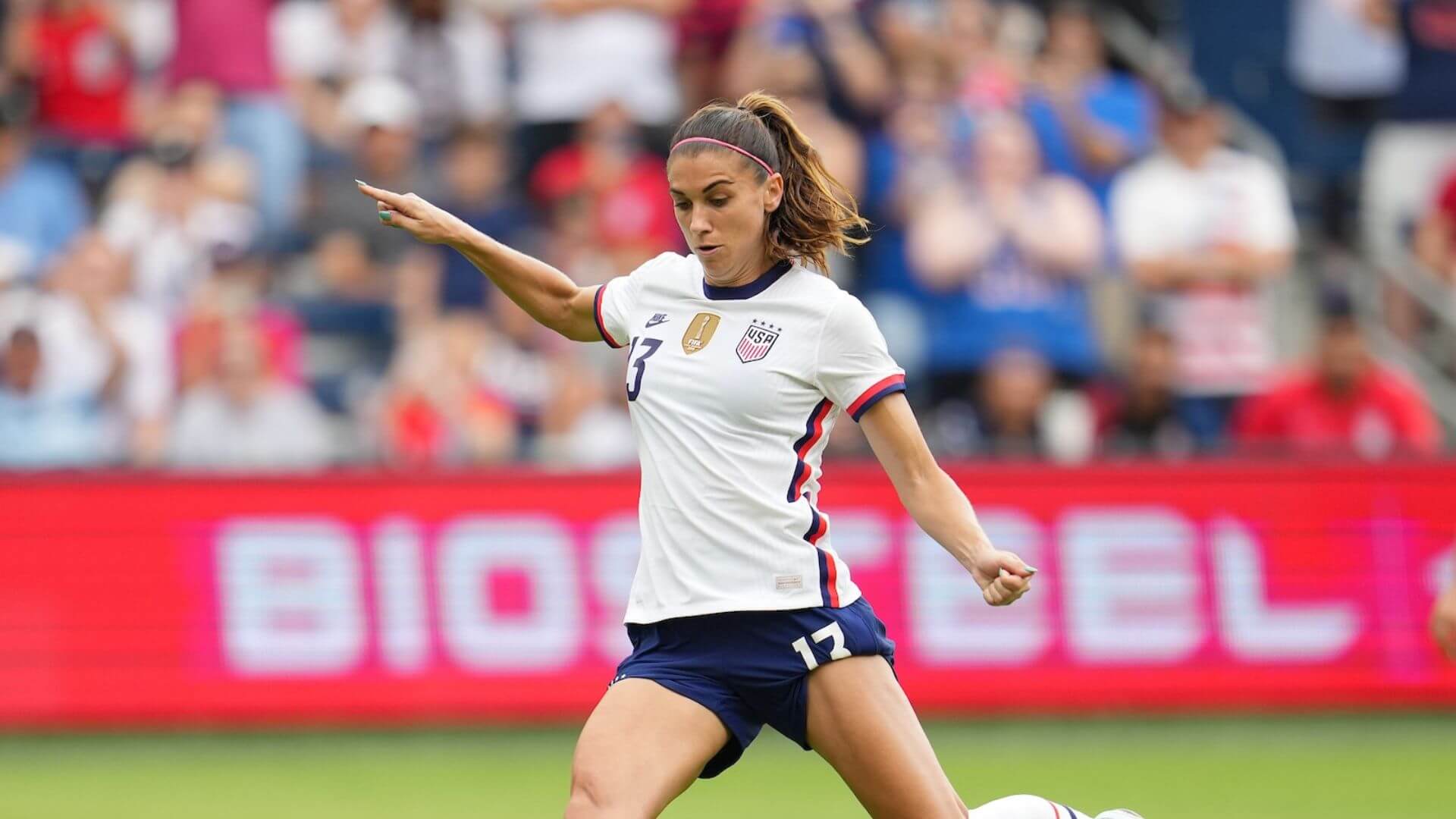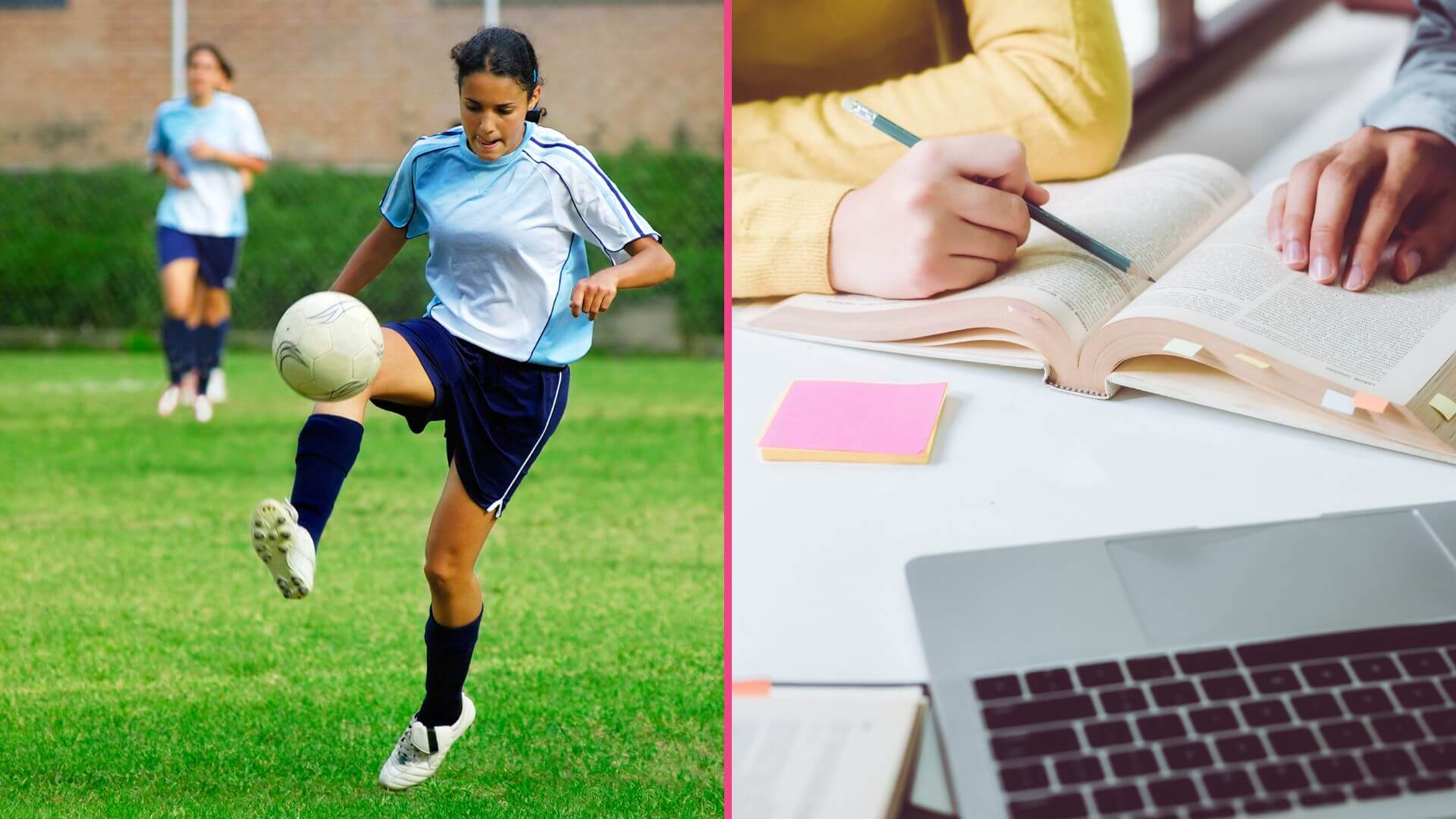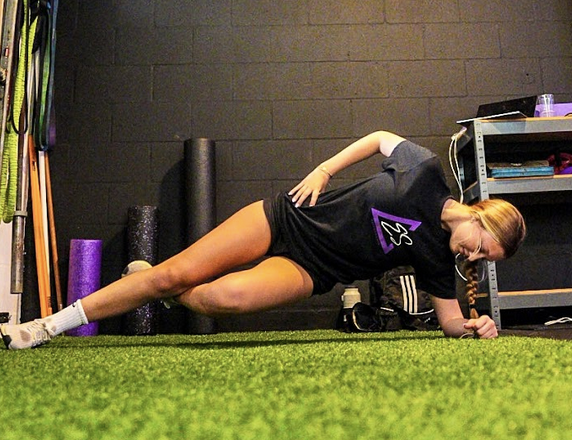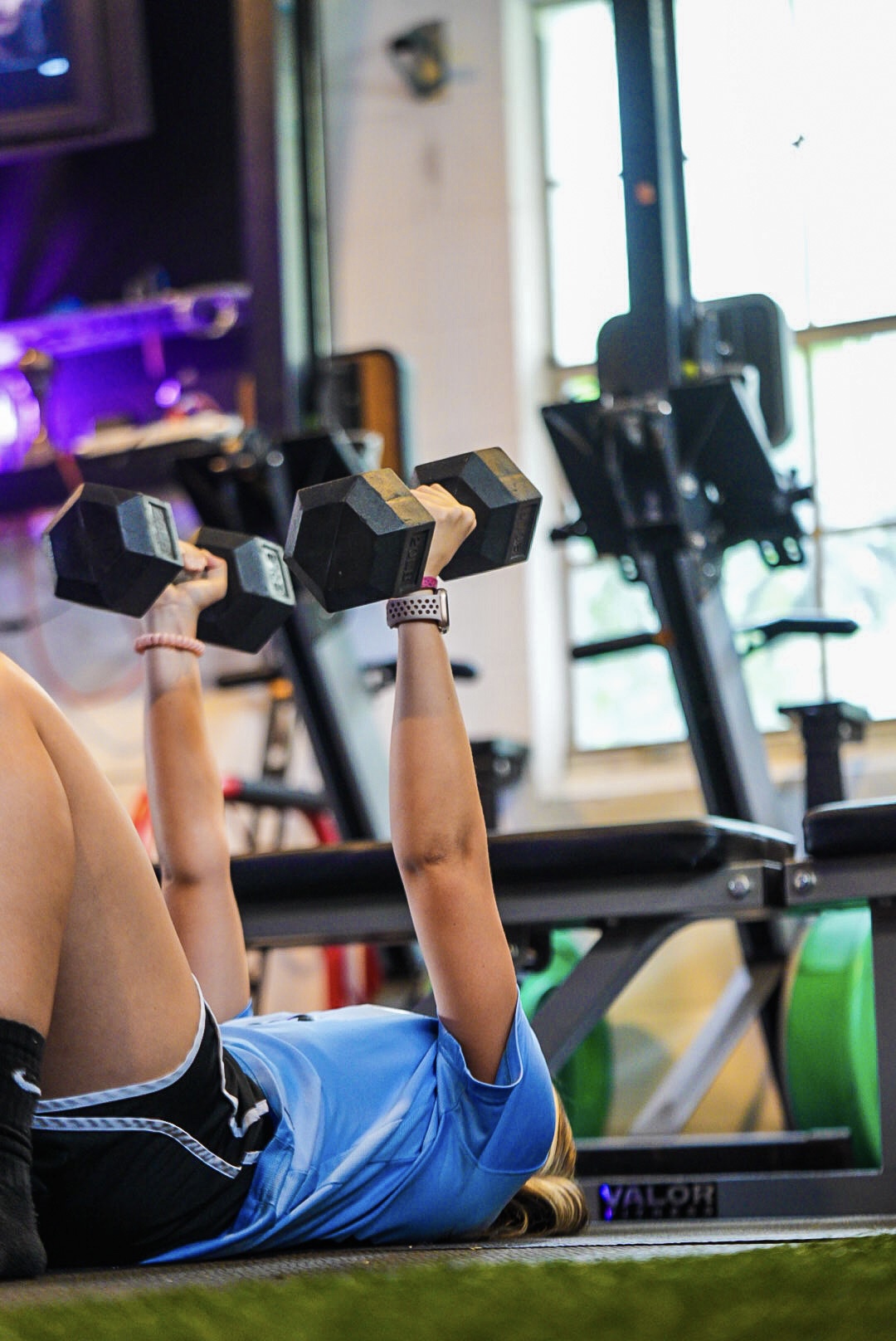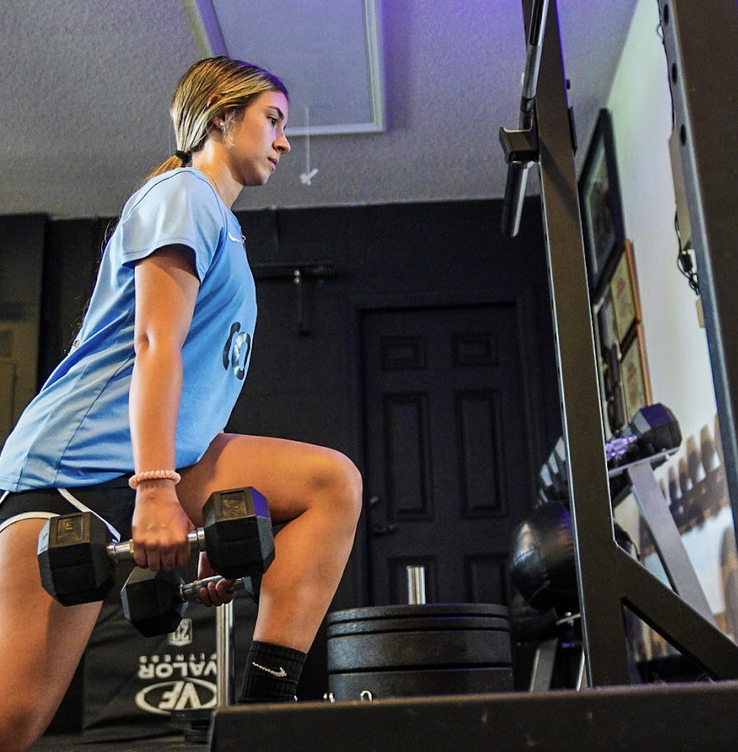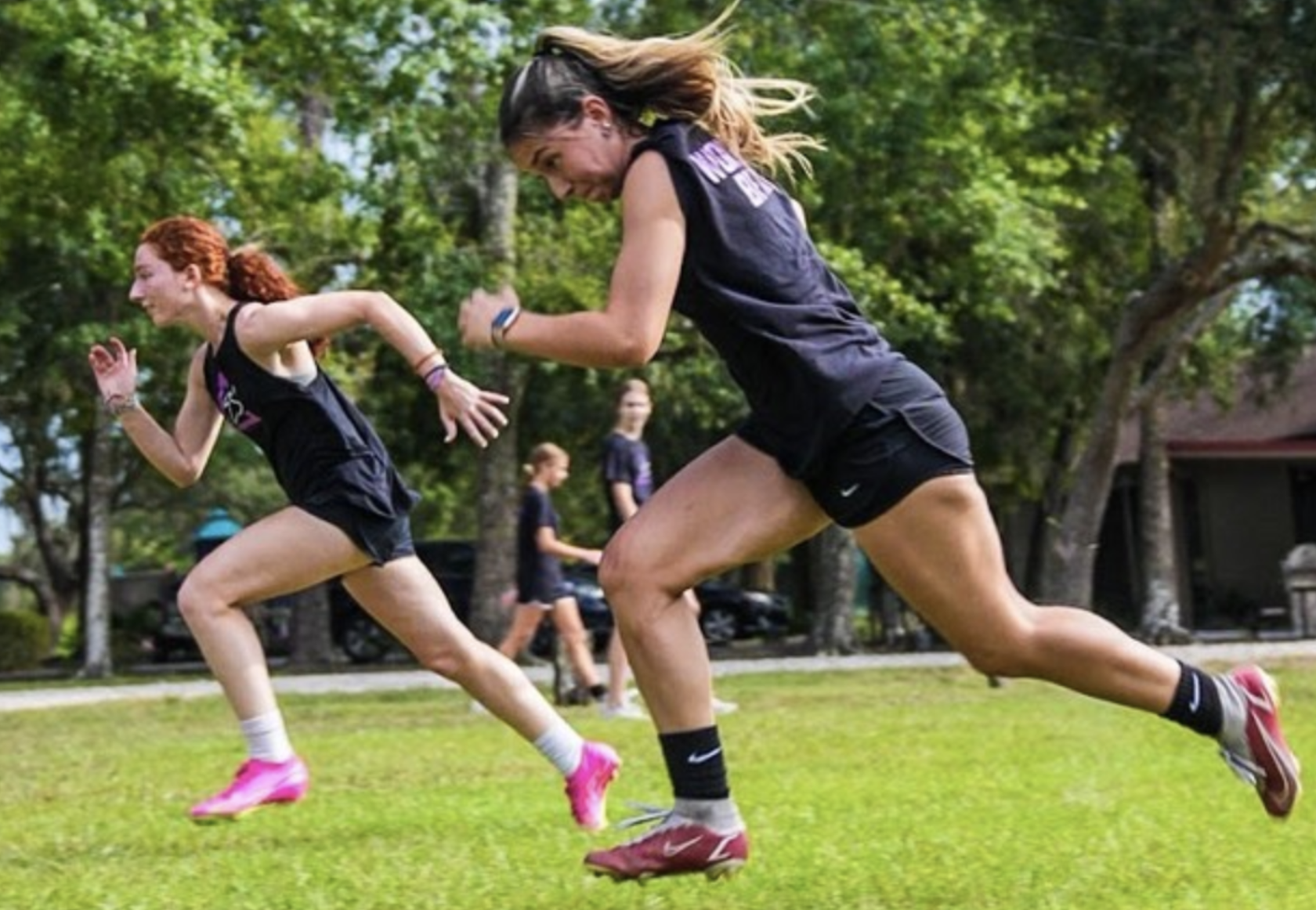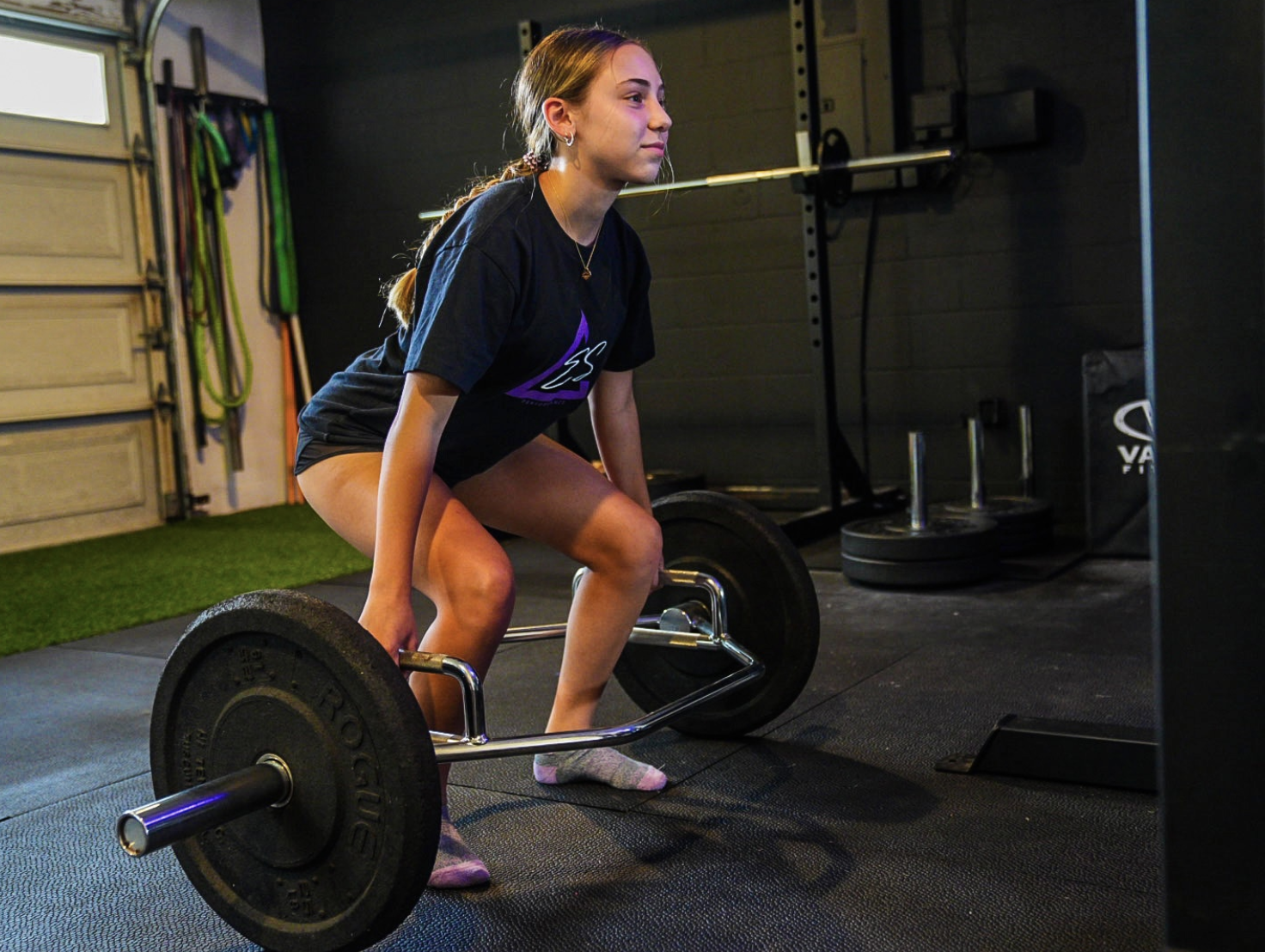Spring Training Tips: Strength is Not Enough for Girls Soccer Players
It’s time for a blast from the past.
Back in the 1990s, strength training was foreign to girls’ soccer players. They feared getting under the iron because they thought they would become bulky, slow down in soccer, and lose their explosiveness. Many girls idolized the societal body image of ultra-skinny as well as aspired to get the absurd “thigh gap.”
Eventually, in the 2000s, Kate Upton, a Sports Illustrated model, came on the scene and showed girls that they don’t have to be stick thin. They can lift weights to have athletic and robust bodies. Kate Upton posted all over her social media her deadlifting, hip thrusting, and crawling with heavy weights, and everyone took notice. During this time, more performance facilities began to open up, and more girls soccer players signed up for strength training programs.
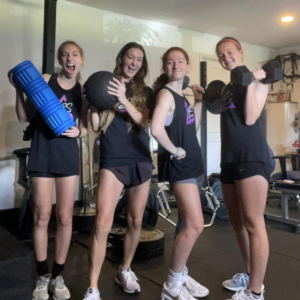
Back in the early 2000s, you were cool if you did a strength program. You got an edge over all of your soccer teammates. The girls lifting realized they were blasting by opponents, lasting the full 90 minutes, and recovering faster than everyone else. They were robust.
Strength Is Not Enough
Now, we are in 2024, and strength is non-negotiable at this point. You don’t get a gold star if you do it. It’s actually the bare minimum. According to legendary ACL researcher Dr. Tim Hewett, girls can reduce the chance of ACL injury by over 40% if they strength train year-round, so every girl must be in the gym at this point. It’s mandatory.
I know more girls in the gym now than ever before, and I’m here for it! It’s incredible to see girls lifting heavy once and for all.
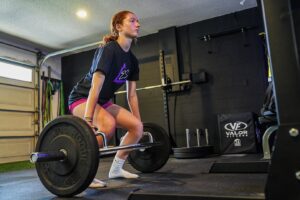
Consistent strength training gives girls soccer players a fighting chance against ACL injury, but it doesn’t mean they will ever fully prevent it. Yes, it’s mandatory now, but there are several other components of injury reduction and performance that girls need to focus on.
This is because I’ve heard of girls being downright devastated when they are strong yet still blow a knee. “I did my strength training, and I could deadlift over 200 pounds! Why did I get hurt?!” they screech in disbelief.
There are so many factors that go into injuries occurring, such as nutritional status, sleep quality, practice and game load management, and more.
This is why strength is not enough at this point in time. Girls lifting iron is better than nothing and highly beneficial compared to girls who don’t lift. But girls need to be doing more.
With that said, here are some spring training tips so you not only stay healthy but raise the ceiling on your performance and overall health status.
1. Be Your Most Nourished Self
A couple of nutrients most girls’ soccer players are deficient in are protein, Omega-3 fatty acids, vitamin D, magnesium, and iron. Sadly, a lot of girls fear protein because they believe it makes them bulky, or some say, “Meat rots in your stomach!”
Protein is one of the most important macronutrients for girls because it repairs and builds muscle. After a training session or game, the muscles are micro-damaged with tiny tears. The only way to facilitate the recovery process is by infusing the cells with protein, namely, animal-based proteins.
These contain not only all the essential amino acids but also other amazing nutrients like Omega-3 fatty acids, vitamin D, magnesium, selenium, zinc, B vitamins, vitamin E, vitamin K, choline, and iron. Meat, eggs, and fish contain all of these and are great bang-for-buck options. The itty bitty salads, seeds, and twigs ain’t it. I’m not surprised why many girls are B12 and iron deficient, have menstrual disorders and suffer overuse injuries.
Eat meat.
Girls also don’t get enough fat because they have been sold the lie that “fats make them fat.” They’ve opted for that skinny latte, low-fat cheese, and reduced fat this and reduced fat that. This needs to stop. Omega-3 fatty acids are healthy for the joints, improve heart health and lower inflammation in the body. They’re essential for good mental health since the brain is made up of fatty acids EPA and DHA found in animal-based proteins.
The myelin sheath that insulates neurotransmitters in the brain needs to be strong. One way to do this is to have fatty acids DAILY. The myelin sheath covers over 60,000 miles in the brain, so don’t skimp out and be a low-fat chick. Your mental health matters, too.
Girls are getting injured because their nutrition is causing chronic inflammation, poor muscle recovery, and awful conditioning status. Too often, parents of girls think getting tired at the end of the game is a conditioning problem, so they run their girls into the ground. They continue to under-eat and over-train. It’s catastrophic. Proper nutrition is the key to improved endurance, not always extra running.
If girls’ soccer players aren’t giving their muscles and brains the nutrients they need, it’s no wonder they’re fatigued, sore, hurt, and have poor mental health.
2. Have an Off-season
Soccer is played over eight months out of the year for most youth girls soccer players. This is a tragedy because this is a schedule designed for 18-24-year-old women.
Girls who are going through puberty and adolescence cannot be pounding away at their changing bodies with the same soccer movements year-round because they overuse muscle groups and don’t allow for these muscles to recover and rebuild.
Girls need an off-season, meaning at least two to three months away from competitive soccer, so they can work on building strength, speed, and power. The best training adaptations occur when they can narrow their focus on these things, and not be so worn out from soccer they get nothing out of their workouts.
3. Expose Yourself to High Velocity Movements
Most injuries occur during high-velocity movements, such as running at top speeds and making a fast change of direction or cut. This means training needs to expose girls to this type of stimulus more than it occurs on match day.
Too often, girls under-train in this area because they aren’t hitting max velocity in practices due to small-sided game drills. As a result, they blow a knee the moment they run that fast sprint and decelerate suddenly on match day.
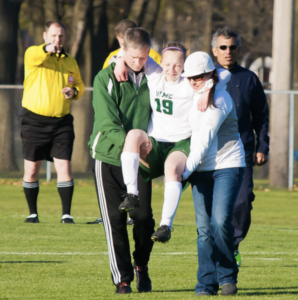
Girls must train speed year-round, with at minimum once a week during the season and two to three times a week in the off-season. Yes, in-season speed is okay! The girls in Tampa who train speed year-round are the ones blasting by everyone on the soccer field. It brings me joy to see them crushing it and reaping the potent benefits of in-season speed work.
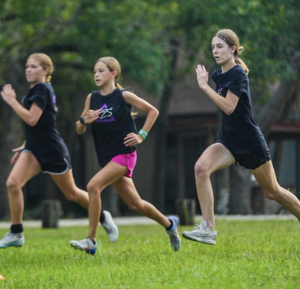
In season, speed can be a quick, efficient workout (about 15 minutes in length) where girls do a few jump and hop drills at high intensity for a short duration. Then, they must get a couple of sprints over 30 yards distance to get that max velocity exposure. Not only is this good for injury reduction, but it’s also good for building fast players! (check out my remote program and book a consult HERE)
4. Don’t Be Fearful of Your Menstrual Cycle
Research is inconclusive on the menstrual cycle and ACL risk, and we cannot point to a single phase where girls are at a higher risk. Some studies say the Luteal Phase increases injury risk, while others are adamant the Ovulatory Phase increases injury risk. Sift through the papers online, and it’s all downright confusing.
So what do we do? We lean on time-tested research on what actually influences injury and performance. The most notable factors in injury risk are everything I mentioned above. So, it’s best girls focus on proper nourishment, load management, and consistent max velocity exposure.
We want robust female athletes, not fearful female athletes.
Scaring them about their hormones and periods is actually counterproductive. It sends females DECADES in reverse.
Playing the victim disempowers female athletes. Being scared of injury can become a self-fulfilling prophecy. Girls should never run from stress but rather prepare for it.
I want solutions, not complaints!
So follow the solutions above consistently, and you’ll find yourself emboldened once and for all.
You truly will be an empowered woman who has the right to say, “I am woman, hear me roar!” Not only will sports performance improve, but your overall HEALTH!
Do More Than the Bare Minimum
Don’t be surprised if you’re the strongest girl in the weight room and still get hurt. You need to dial in on every aspect of high performance – from nutrition to load management to true speed training. Even then, bad luck can happen. All you can do is try the best you can.
Of course, there are many other factors that go into injury reduction but start here. If you want to learn more and see some sample programs and training food menus, check out my book Female Athlete High Performance. True high performers don’t get complacent, and they definitely do more than the bare minimum.
About the Author

Erica Suter is a former college 3x All-American soccer player as well as a Hall of Fame inductee from Johns Hopkins University. She is giving back to the game and to female soccer players as a full-time performance coach. She holds a Master of Science in Exercise Science and has been helping girls with speed, agility, strength, and conditioning for over 12 years in the ECNL, GA, and NPL.
Her players have gone on to play college soccer at UNC, University of Maryland, Pittsburgh, Northwestern, West Point, University of South Florida, University of Charleston, MIT, Johns Hopkins, Carnegie Mellon, Rutgers, Towson University, and more.
Get her best-selling books The Strong Female Athlete and Female Athlete High Performance
Check out her podcast: The Soccer Queens Podcast
_
GIRLS SOCCER NETWORK: YOUR SOURCE FOR GIRLS SOCCER NEWS



